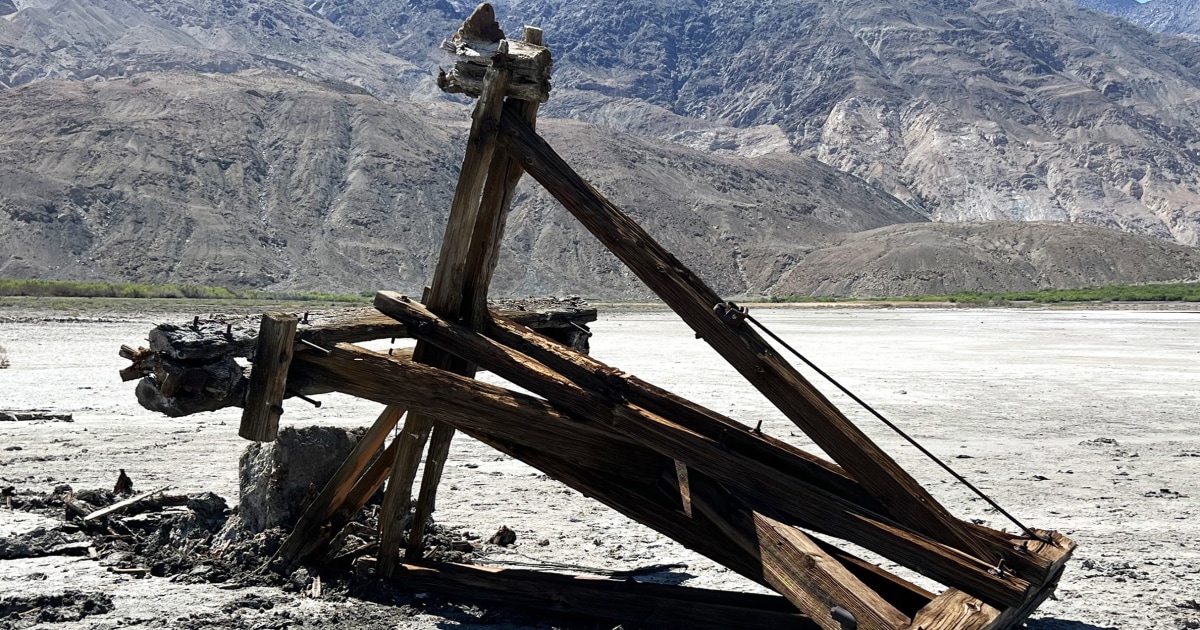A historic wooden tower was inadvertently felled by a traveler who used it to winch a vehicle stuck in mud in California’s Death Valley National Park, federal officials said.
The traveler recently came forward but will not be identified, the National Park Service said in a statement Thursday. It isn’t clear if any action against them will be taken.
Concrete footings for the 113-year-old tower were released from their bonds with the desert floor in Saline Valley, about 150 miles west of Las Vegas, on April 19, the park service said.
Saline Valley Salt Tram tower No. 1 hit the ground, mostly intact, a photo from the park service shows.
The person eventually called a park service tip line set up to get to the bottom of the incident and took responsibility. They had used the tower to anchor a winch in “desperation” while a vehicle was “deeply stuck in mud” not far from a marked roadway, in the words of the park service statement.
“It wasn’t their intent to cause harm to the historic structure,” the agency said.
The tram included 20 original support towers that facilitated its 13.4-mile span from the Saline Valley south to Owens Valley. Built by the Saline Valley Salt Company from 1911 to 1913, the tram ascended 7,600 feet to surmount the Inyo Mountains, according to the park service.
The cost of construction — about $9.5 million in today’s dollars — nearly sunk the company, which ultimately leased it to another salt processor, the park service said. It ferried salt through 1930, according to the park service.
The tram’s 1974 entry in National Register of Historic Places stated it is “the steepest tramway in the United States” and “one of the most scenic, historic, best preserved, oldest, and largest of its kind remaining.”
The tram’s northernmost four towers, including No. 1, are within Death Valley National Park. In a 2021 structure report, the park service said No. 1’s concrete footings had “deteriorated beyond repair” and needed to be replaced.
The park service said a “stabilization project” for the four towers was planned before the incident, but it wasn’t clear if its funding could be used to repair No. 1.
“The park’s resource management team is working on doing a full assessment of the damage, and making plans for what responsible restoration of the salt tram would look like,” the park service said.
